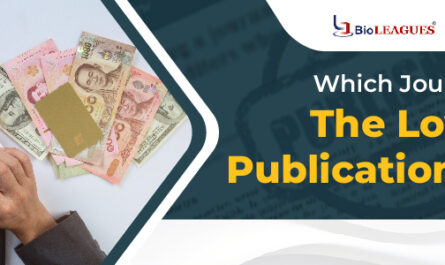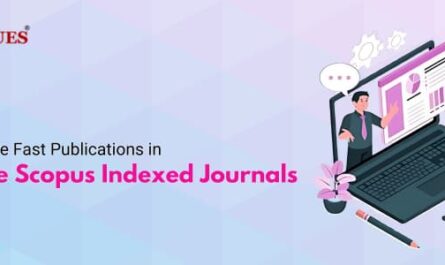PubMed is a database that supports biomedical, life sciences, behavioural sciences, chemical sciences, and bioengineering journals. Researchers and publishers who are willing to gain a scientific reputation want to index their journals in PubMed. This offers global visibility and increases the chances of attracting valuable citations. However, like any other indexing method, this can take a significant amount of time based on the topic and type of research.
It is important to consider the indexing duration of PubMed in order to plan accordingly. If you want to index a journal in PubMed, it must be selected as a MEDLINE journal or submitted for PMC. This process can take 1 week to a month to be visible in the PubMed database. Many authors choose Fast publishing PubMed indexed journals to reduce this duration.
You can read this detailed article to understand how long it takes to get PubMed indexed.
Process to Include a Journal in PubMed
Any journal must undergo a pre-application requirement that involves an evaluation process. The National Library of Medicine( NLM) assesses the scientific scope and value of the journal. Esteemed authorities evaluate the editorial quality of the journal for publication. Publishers of the journal must understand each PMC policy before submitting their application.
The journals indexed in PubMed can be expensive and charge a fee. Many publishers opt for PubMed indexed journals without publication fee as it is more economical. You can choose MEDLINE or PMC to index your journal in PubMed.
MEDLINE Indexing Process
MEDLINE is a database consisting of over 31 million references to journal articles. The interface is accessed through PubMed, and journals selected for MEDLINE include genetic, chemical and other metadata. Once the journals are indexed in MEDLINE, it takes 24 hours to do online indexing in the PubMed database.
Most fast publishing PubMed indexed journals use this method as it is relatively faster. Following is the process you can follow for MEDLINE journal indexing, which takes 6-8 months for evaluation:
- Pre-Application Requirements
To gain an indexing status, a journal must have a properly registered ISSN. A journal that has a valid electronic format shall be considered for the electronic version only. Before this process, a journal must be published in print or electronic format for at least 12 months.
Along with this, a minimum of 40 peer-reviewed articles must be published in the journal with original research. All peer-reviewed content must have unique abstracts. Moreover, a journal must comply with the language guidelines of MEDLINE.
- Submit Application
Once the pre-application process is completed, the evaluation process begins. This can take upto 3-7 days depending on the research paper, topic, and complexity of results achieved. You need to submit a few pieces of information to the application through the MEDLINE publisher portal.
- Journal title and ISSN(s)
- Date of first publication and publication frequency
- Journal Website URL
- Links to detailed descriptions of the editorial board, editorial policies, peer review process, and policies on Conflict of Interest, Human and Animal Rights, and Informed Consent
- Publisher Name
- Information about management, qualifications, and publishing policies
- Initial Application Screening
NLM evaluates the application to check if it meets the pre-application requirements. If there are any inconsistencies or lack of information, they are communicated to the applicants for further requests. However, if the process is complete, NLM assesses the journal’s scope and quality against the NLM collection and MEDLINE requirements.
The Literature Selection Technical Review Committee checks the editorial board’s information, stated aims, and scope. Journals have a chance to reapply within 24 months if they do not pass this eligibility criteria.
- Scientific Quality Review
MEDLINE deals with PubMed indexed Medical journals that include scientific facts and research figures. This is why it is important to assess the scientific quality standards of a journal in MEDLINE. Researchers are provided a summary of review feedback. As per the reapplication policy, journals can reapply within the prescribed duration.
- Technical and Indexing Requirements Check
If your journal is recommended for MEDLINE, you must confirm the XML provider. The team may request to complete the PubMed Technical Evaluation if they are new to PubMed. This must be completed within six months of being notified of the MEDLINE recommendation. After this, NLM checks if the journal meets the access and Preservation requirements and can also work with publishers to ensure full compliance.
Until these conditions are met, a journal is considered to be conditional. You must complete the requirements by the requested deadline to avoid rejection of the application. An easy way to check your journal selection is to find the PubMed indexed journals list PDF.
- Submit Citations
Once the process is complete, the journal XML provider is given a private FTP account. This account can be used to submit citation data in PubMed. You can check the official website to check which articles are accepted or check the XML Help for PubMed Data Providers page. Even after the submission, the journal and publishers are required to comply with the quality standards of MEDLINE and the NLM collection.
PMC Indexing Process
PubMed Central (PMC) is another way to index your journals in PubMed. It can take around 10 months or more to index a journal in PMC. After a journal is indexed in PMC, it may take up to 3 weeks for it to be visible in the PubMed database. This is why it may be considered a slower method of journal indexing. It uses a two-step review process, which is lengthy, and assesses the quality of the articles in a journal.
Pre-application Process
A journal must have a proper record of officially registered ISSN. As per the NLM’s Electronic Resources policy, the publishers must offer immediate access to third-party sites and the content. Additionally, at least 25 peer-reviewed articles with original research must be published in final form. Plus, the journal must meet the language guidelines of PMC.
Submit Application
PMC require the following information for an application:
- Journal title and ISSN
- Date of first publication and publication frequency
- Journal Website URL
- Links to the editorial board; editorial policies; peer review process; and policies on Conflict of Interest, Human and Animal Rights, and Informed Consent
- Publisher name and information about its management, qualifications, and publishing policies
Screening
The screening stage decides if the journal is within the scope of PubMed standards. Certain factors decide if the journal is fit for indexing in the citations of PubMed. For example, all publishers for PubMed indexed dental journals need to provide a clearly stated peer-review policy. The journal must be within the life sciences and biomedical fields. In addition, the affiliations of authors should dictate the journal’s scope and also showcase their editorial freedom and diversity.
Scientific Quality Review
All the journals, including Web of Science PubMed indexed journals 2025 have gone through a scientific review. Based on the expert opinion of industry authorities, scientific fact-checking is done for a journal. The standards for scientific quality are determined by content, policy, and journal information. This includes methodologies used for the research and tests to determine results and conclusions. The following types of research are accepted for this stage:
- Original research & review articles
- Clinical case reports
- Data descriptor articles that point to a dataset
- Descriptions of clinical or surgical procedures
Technical Evaluation
Publishers must fill out a Technical Evaluation Checklist, which must be returned before PMC starts any evaluation work. After this, publishers are required to submit a sample of 25 articles that were recently published as a representation of the journal. These must be listed as “Files to be deposited for each article” in the technical quality section of the PMC Policies page. All free PubMed indexed journals are checked to meet the minimum data criteria satisfaction.
Moreover, the deposit must adhere to the delivery section of PubMed’s file submission specification. Another important criterion is every article must be presented as originally generated files from XML. This issues error-free representation of the recorded version of articles.
The publishers are requested to check all errors and file the correct report. After three rounds of continuous evaluation, the report can be rejected if the publishers fail to address all requested errors.
Pre-Production
PMC offers a correction report if they spot any error in the complete set of article files. They may request a formal PMC participation agreement and article files with the Back Content Policy. Journals must also provide banner images that match the PMC’s banner specifications. Once all the error-free files are completed and all the specifications are met, PMC proceeds to the next step.
Live Release
Once the steps are completed, the NLM releases the PMC and participation agreement, and the journal is released on the public site. A journal must continuously comply with NLM’s quality standards even after the indexing.
Wrapping Up
PubMed can offer researchers and publishers a competitive edge by bringing global credibility. The best authorities work with PubMed to assess the quality of scientific rigour. This is why most Fast publishing PubMed indexed journals 2025 can attract noteworthy citations from esteemed publications. However, it is best to do your research by checking a few samples before deciding on an indexing method. You can check the Web of science PubMed indexed journals pdf.




